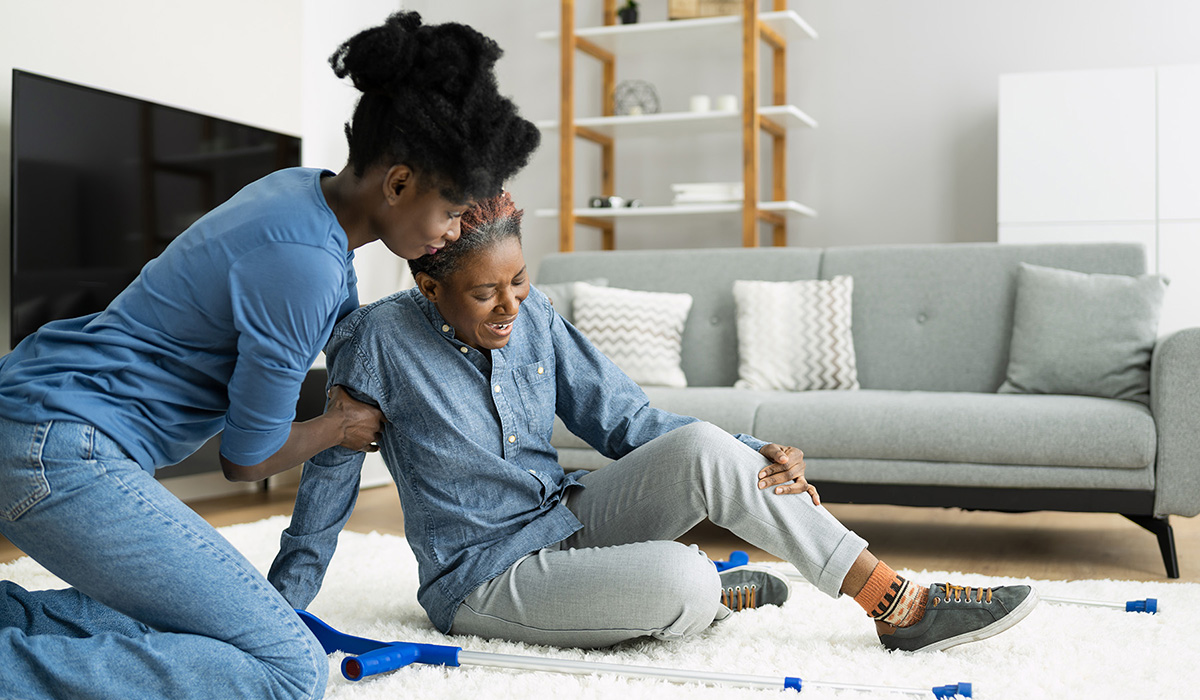Article by Holly Giovengo, ElderLink
(Posted 2025 September)

 According to the National Institute on Aging, one in four older adults aged 65 or older falls every year. Falls can be caused by a simple accident, like losing your footing, but there are other factors that increase the risk of falling. These include health conditions, medications, and even poor lighting. After a fall, some older adults develop a fear of falling and begin limiting their activity. However, decreasing physical activity actually increases the risk of falls. The good news is that many falls are preventable.
According to the National Institute on Aging, one in four older adults aged 65 or older falls every year. Falls can be caused by a simple accident, like losing your footing, but there are other factors that increase the risk of falling. These include health conditions, medications, and even poor lighting. After a fall, some older adults develop a fear of falling and begin limiting their activity. However, decreasing physical activity actually increases the risk of falls. The good news is that many falls are preventable.
The Mayo Clinic recommends these falls prevention strategies:
- Visit your health care provider to discuss your falls risk. Tell your provider if you have had any previous falls and if you have a fear of falling. Your provider can review your medications and supplements, your current health conditions, and even your muscle strength, balance, and walking style.
- Wearing properly fitted shoes with nonskid soles can go a long way in preventing falls! Shoes to generally avoid are loose sandals, high heels, slippers, and shoes with poor grip. It’s a great idea to keep a pair of well-fitting shoes for use only in the home.
- Reduce common hazards around the home. Create clear, clutter-free walkways – paying special attention to electrical cords and furniture. Secure loose rugs with slip-resistant backing or double-sided rug tape or consider removing them altogether. Use nonslip mats in your bathtub or shower. Quickly repair loose floorboards and carpeting.
- Ensure adequate lighting in your bedroom, bathroom, and hallways. Place a lamp within reach of your bedside and a lamp or light switch near the entrance of every room and stairway. If light switches are not at the entrance of the room, create a clear path and consider using illuminated switches.
- Use assistive devices. These include canes and walkers, handrails, nonslip treads on wooden steps, a raised toilet seat, grab bars, a shower chair, and stair lifts.
- Stay active! After discussing with your health care provider, pursue activities like walking or exercise programs at your local community or senior center. While some people may begin to avoid physical activity because of a fear of falling, exercise and physical activity can reduce falls risk by improving strength, balance, coordination and flexibility.
ElderLink, a nonprofit partnership between Inova and the Fairfax Area Agency on Aging, regularly offers three evidence-based falls prevention programs throughout Fairfax County that promote safe movement, health education, and self-advocacy – Walk with Ease, Bingocize, and A Matter of Balance. For more information and to register, visit FairfaxCounty.gov/familyservices/older-adults/elderlink or call ElderLink’s intake line, 703-324-5374, TTY 711.
This article is part of the Golden Gazette monthly newsletter which covers a variety of topics and community news concerning older adults and caregivers in Fairfax County. Are you new to the Golden Gazette? Don’t miss out on future newsletters! Subscribe to get the electronic or free printed version mailed to you. Have a suggestion for a topic? Share it in an email or call 703-324-GOLD (4653).

